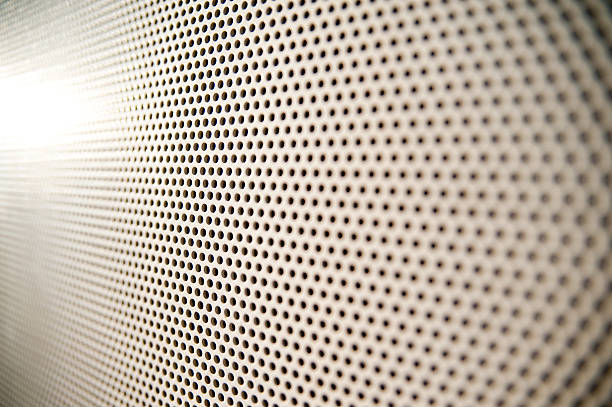
Invar is a widely used material in chemical etching due to its unique properties. In this article, we will explore the specific features of Invar as a material in chemical etching and delve into common Invar alloys used in the market.
Characteristics when chemically etching Invar:
Invar, also known as Nickel-Iron alloy, is an ideal material for chemical etching due to its specific features. Some of its notable characteristics during chemical etching include:
Low thermal expansion: Invar has a very low coefficient of thermal expansion, making it resistant to thermal shock during the etching process. This feature is essential in ensuring dimensional stability and maintaining the accuracy of the final product.
High dimensional stability: Invar has excellent dimensional stability, which means that it maintains its shape and size even when exposed to temperature changes. This feature is crucial in achieving precise and consistent results in the etching process.
Easy to etch: Invar is a relatively soft material, which makes it easier to etch than other metals like stainless steel. This property also enables the use of less aggressive etchants, which reduces the likelihood of undercutting and other undesirable effects.
Characteristics of Invar:
Apart from the above features, Invar has other notable characteristics, which make it a popular material in many industries. These include:
Low thermal expansion: Invar’s low coefficient of thermal expansion makes it an ideal choice for applications where dimensional stability is critical, such as in the manufacture of precision instruments and optical components.
High strength-to-weight ratio: Invar has a high strength-to-weight ratio, which makes it a popular choice for applications requiring high strength while maintaining a lightweight.
Good machinability: Invar is easily machinable, making it a versatile material for a wide range of applications.
Non-magnetic: Invar is non-magnetic, which makes it ideal for applications where magnetic interference is a concern.
Difference between traditional sheet metal precision processing VS Chemical etched sheet metal processing
VECO’s video to learn what metal etching is.
Comments related to etching technology:
From @chadr2604:
There is another way it involves stacking many layers of very thin material with an There is another way it involves stacking many layers of very thin material with an adhesive, pressing the stack, then either stamping or punching the blank then heating it to release the adhesive. The parts will not be as accurate the tolerance is limited to about .002″ but if its good enough its much faster.
From @chadr2604:
If you try to cut that stack with a laser you will just start a fire we had an aluminum fire trying that.
Modern precision sheet metal fabrication includes a common technique known as etching, which differs from traditional sheet metal fabrication in several ways. Here are some key differences between etching and traditional precision sheet metal fabrication:
- Principle: Traditional sheet metal fabrication typically involves mechanical processes such as cutting, bending, and punching to shape and form metal sheets. Metal etching by Metal Etching Machine , on the other hand, is a chemical process that uses specialized etchants to selectively corrode the metal surface, achieving precise etched patterns and features.
- Accuracy and Complexity: Etching offers advantages in terms of precision and complexity. By controlling the composition, concentration, temperature, and etching time of the etchant, extremely fine etching can be achieved with accuracy down to sub-micron levels. Additionally, etching allows for the creation of intricate geometries, microstructures, and patterns that may be difficult to achieve using traditional mechanical methods.
- Processing Speed and Cost: Etching generally offers faster processing speeds, particularly in large-scale production. In comparison, traditional mechanical fabrication methods may require more time and cost to achieve the same level of precision and complexity.
- Materials Compatibility: Etching techniques are applicable to a range of metal materials, such as copper, aluminum, stainless steel, and titanium. Traditional sheet metal fabrication methods may have limitations when it comes to certain materials or thicker metal sheets.
- Design Flexibility: Etching provides greater design flexibility. By incorporating techniques like photolithography or screen printing during the etching process, complex patterns and structural designs can be achieved. This makes etching suitable for applications in microelectronics, optical devices, microfluidic devices, and more.
Common Invar Alloys:
There are several Invar alloys available in the market, each with unique characteristics that make them suitable for specific applications. Some of the common Invar alloys include:
Invar 36: This is a nickel-iron alloy that contains 36% nickel. It has a low coefficient of thermal expansion and excellent dimensional stability, making it suitable for precision instruments and optical components.
Invar 42: This is a nickel-iron alloy that contains 42% nickel. It has a low coefficient of thermal expansion, making it an ideal choice for applications where dimensional stability is critical.
Inconel 625: This is a nickel-based alloy that contains 21.5% chromium, 9% molybdenum, and 5% niobium. It has excellent corrosion resistance and high strength at elevated temperatures, making it suitable for aerospace and marine applications.
In conclusion, Invar is a versatile material with unique characteristics that make it an ideal choice for chemical etching applications. Its low coefficient of thermal expansion, high dimensional stability, and ease of etching make it a popular choice in various industries. Additionally, the numerous Invar alloys available in the market make it possible to select the most suitable alloy for specific applications.
If you have an Inconel etching project that you need help with, please contact us
